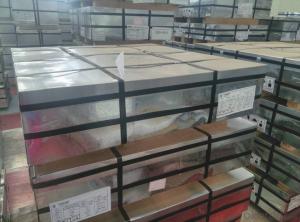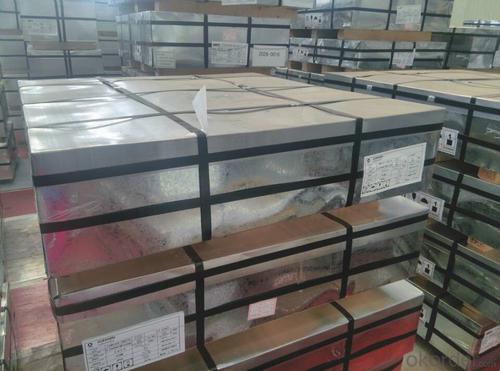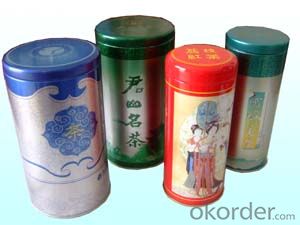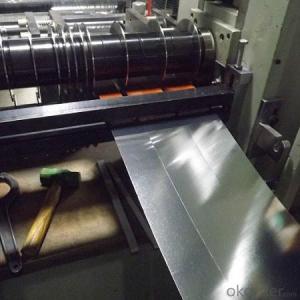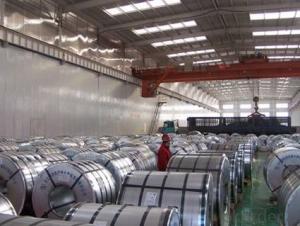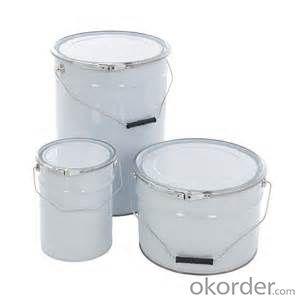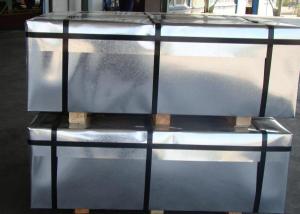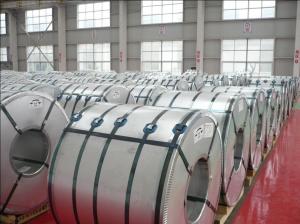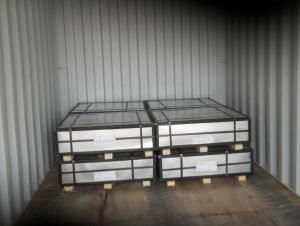MR Tinplate For Paint Cans, Prime Quality
- Loading Port:
- China main port
- Payment Terms:
- TT OR LC
- Min Order Qty:
- 25 m.t
- Supply Capability:
- 40000 m.t/month
OKorder Service Pledge
OKorder Financial Service
You Might Also Like
Specification
1.Usage
Tinplate is widely used for making all types of containers, containing industrial usage such as paint can, oil can, aerosol cans etc., and food cans like milk powder cans, tomato paste can, dry food cans etc.
2. Our CA Line Production Range
Temper | Thickness(mm) | Width(mm) | Length(mm) |
T3CA | 0.19~0.20 | 800~900 | 520~1068 |
0.21~0.25 | 800~950 | ||
0.26~0.45 | 800~1050 | ||
T4CA | 0.17~0.20 | 800~950 | |
0.20~0.45 | 800~1050 | ||
T5CA | 0.17~0.20 | 800~950 | |
0.20~0.28 | 800~1050 |
3. Our factory photo & equipments

4. Our Markets:
now our tinplate has been sold to more than 50 countries, including Europe country, Gulf Area, South American, South Afric etc.
5. Our Overseas Wareouses:
Furthermore, in the year 2014, we have more than 10 overseas warehouses all over the word, located in KSA, UAE, Oman, Russia, Kuwait, Qatar, Oman, Chile, Brazil etc.
6. FAQ
a. what's the annual output?
about 500,000 tons per year.
b. where's the raw matrial from?
our hot rolled coil is purchased from Capital Steel and other state owned mill, with quite good quality.
c. how long is the delivery time?
normally for SPCC about 45~55 days, while 65~75 days for MR material
d. how to control the quality during production process?
inside our workshop, we have MES syestem. It realizes the optimization of the production procedure in the workshop. It could record each step of the whole production procedures, and if some problem appears, factory could easily found and take action, it’s quite helpful to monitor and control the quality.
- Q: How does tinplate contribute to the containment of chemical substances?
- Tinplate contributes to the containment of chemical substances through its excellent barrier properties. The tin coating on the steel substrate forms a protective layer that prevents direct contact between the chemical substances and the metal, reducing the risk of corrosion and contamination. This barrier also helps to maintain the integrity and stability of the chemical substances by preventing interactions with external factors such as moisture, oxygen, and light. Overall, tinplate provides a secure and durable packaging solution for chemical substances, ensuring their safety and quality throughout storage and transportation.
- Q: What are the main factors influencing the price of tinplate?
- There are several main factors that influence the price of tinplate. Firstly, the cost of raw materials such as tin and steel, which can fluctuate based on supply and demand dynamics, can have a significant impact on tinplate prices. Additionally, changes in labor costs, energy prices, and transportation expenses can also affect the overall price of tinplate. Furthermore, market conditions, including global economic trends, geopolitical factors, and trade policies, can influence the demand and pricing of tinplate. Lastly, technological advancements and innovations in tinplate manufacturing processes can impact production costs and subsequently affect the price of tinplate.
- Q: How is tinplate coated with epoxy resin?
- Tinplate is typically coated with epoxy resin through a process known as electrostatic spraying or electrodeposition. In this process, the tinplate is first cleaned and pre-treated to ensure proper adhesion. Then, a positively charged tinplate is immersed in an epoxy resin bath containing negatively charged epoxy particles. The resin particles are attracted to the tinplate surface and adhere electrostatically, forming a uniform coating. The coated tinplate is then cured at high temperatures to harden the epoxy resin, resulting in a durable and corrosion-resistant finish.
- Q: Tin and tinSince the back skin as long as tinplate will rust, so why not replace tin?
- Oftinned is actually, tinplate, commonly used in food and beverage packaging, have good anti-corrosion effect, and no harm to human body. We used a lot of tinplate cans, is done. The tinplate back skin, is actually the plate above the tin, is physical effect eroded, so the steel will rust.
- Q: What are the advantages of using tinplate for packaging?
- There are several advantages of using tinplate for packaging. Firstly, tinplate is highly durable and can withstand external impacts, protecting the contents of the package. Secondly, it is resistant to corrosion, ensuring the longevity of the packaging and preventing contamination of the product. Additionally, tinplate is lightweight and easy to handle, reducing transportation costs and making it convenient for consumers. Moreover, tinplate is environmentally friendly as it is 100% recyclable, promoting sustainability and reducing waste. Lastly, tinplate offers excellent printing capabilities, allowing for attractive designs and branding options, which can enhance product visibility and appeal.
- Q: How is tinplate used in the beverage industry?
- Tinplate is commonly used in the beverage industry for packaging cans due to its ability to provide a protective barrier against corrosion and maintain the flavor and quality of the beverages.
- Q: What are the common challenges in recycling tinplate packaging?
- Some common challenges in recycling tinplate packaging include the separation of tinplate from other materials, such as plastic or paper, which can be time-consuming and costly. Additionally, the removal of any residual contents or labels from the tinplate can be challenging. The recycling process may also be complicated by the presence of coatings or laminations on the tinplate. Finally, the availability of recycling facilities specifically equipped to handle tinplate packaging can be limited, leading to logistical difficulties in the recycling process.
- Q: Does tinplate corrode over time?
- Yes, tinplate can corrode over time.
- Q: Can tinplate be used for coffee or tea packaging?
- Yes, tinplate can be used for coffee or tea packaging. Tinplate is a commonly used material for such packaging due to its durability, ability to maintain product freshness, and resistance to moisture and oxygen. Additionally, tinplate offers excellent printing capabilities, making it an ideal choice for branding and product information display.
- Q: How is tinplate coated for beverage cans?
- Tinplate is coated for beverage cans through a process called electrolytic tinplating. In this process, a thin layer of tin is electroplated onto the surface of the steel sheet. The steel sheet is first cleaned and then passed through an electrolyte solution containing tin salts. An electric current is then applied, causing tin ions to be reduced and deposited onto the steel surface, forming a protective and corrosion-resistant tin coating. This tin coating ensures that the beverage cans remain safe and free from any metallic taste.
Send your message to us
MR Tinplate For Paint Cans, Prime Quality
- Loading Port:
- China main port
- Payment Terms:
- TT OR LC
- Min Order Qty:
- 25 m.t
- Supply Capability:
- 40000 m.t/month
OKorder Service Pledge
OKorder Financial Service
Similar products
Hot products
Hot Searches
Related keywords
